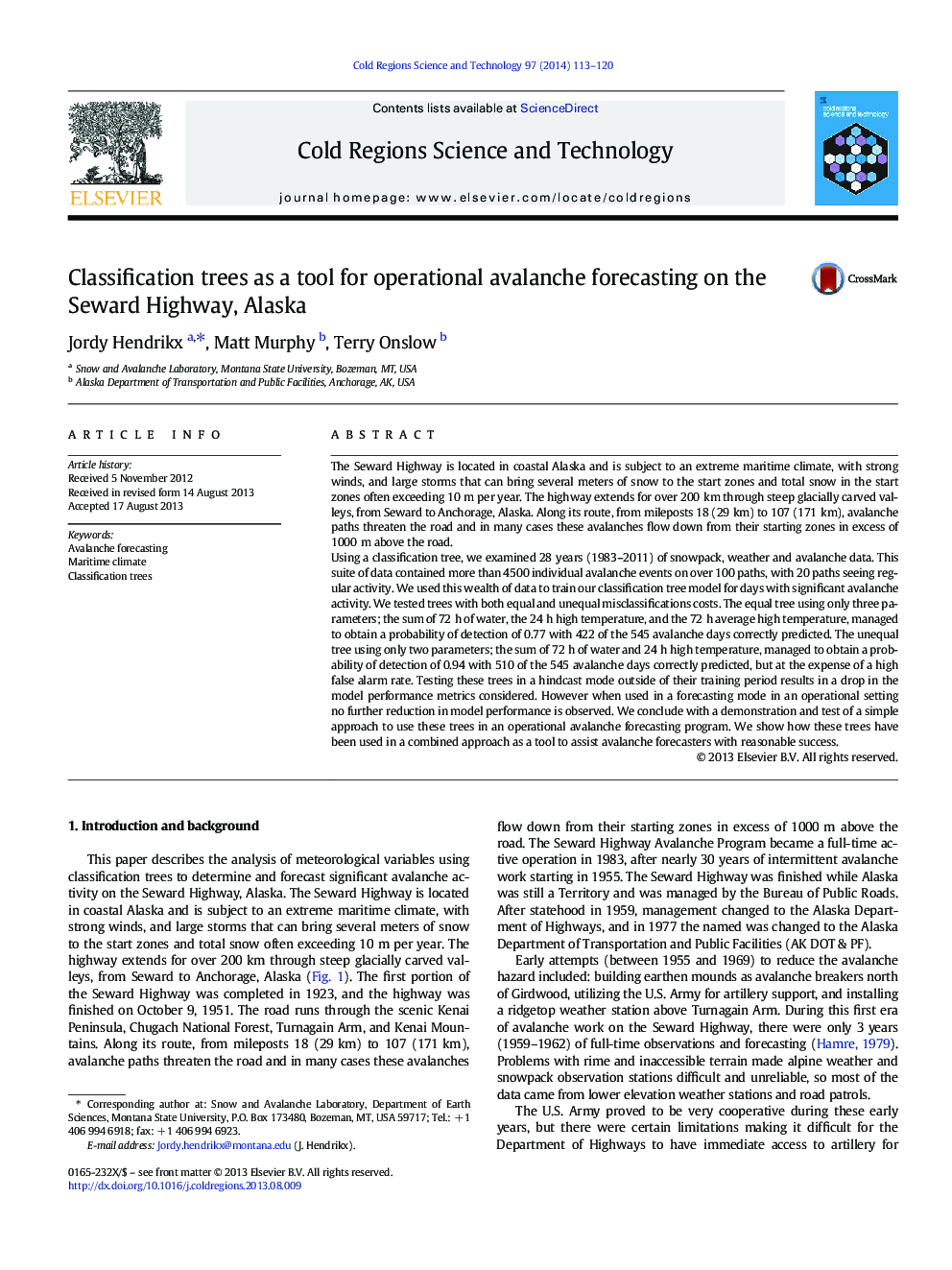| Article ID | Journal | Published Year | Pages | File Type |
|---|---|---|---|---|
| 6426960 | Cold Regions Science and Technology | 2014 | 8 Pages |
â¢A high level of accuracy of 0.77 and 0.94 for avalanche days, depending on misclassification costsâ¢Achieved using a maximum of three parameters; 72 hour sum of water, 24 hour high and 72 hour average high temperaturesâ¢Assessed both statically and “true” ability to forecast avalanche activityâ¢Provided example to implement system into an operational forecasting programâ¢Use of forecasted parameters did not further reduce the skill of the model.
The Seward Highway is located in coastal Alaska and is subject to an extreme maritime climate, with strong winds, and large storms that can bring several meters of snow to the start zones and total snow in the start zones often exceeding 10Â m per year. The highway extends for over 200Â km through steep glacially carved valleys, from Seward to Anchorage, Alaska. Along its route, from mileposts 18 (29Â km) to 107 (171Â km), avalanche paths threaten the road and in many cases these avalanches flow down from their starting zones in excess of 1000Â m above the road.Using a classification tree, we examined 28Â years (1983-2011) of snowpack, weather and avalanche data. This suite of data contained more than 4500 individual avalanche events on over 100 paths, with 20 paths seeing regular activity. We used this wealth of data to train our classification tree model for days with significant avalanche activity. We tested trees with both equal and unequal misclassifications costs. The equal tree using only three parameters; the sum of 72Â h of water, the 24Â h high temperature, and the 72Â h average high temperature, managed to obtain a probability of detection of 0.77 with 422 of the 545 avalanche days correctly predicted. The unequal tree using only two parameters; the sum of 72Â h of water and 24Â h high temperature, managed to obtain a probability of detection of 0.94 with 510 of the 545 avalanche days correctly predicted, but at the expense of a high false alarm rate. Testing these trees in a hindcast mode outside of their training period results in a drop in the model performance metrics considered. However when used in a forecasting mode in an operational setting no further reduction in model performance is observed. We conclude with a demonstration and test of a simple approach to use these trees in an operational avalanche forecasting program. We show how these trees have been used in a combined approach as a tool to assist avalanche forecasters with reasonable success.
